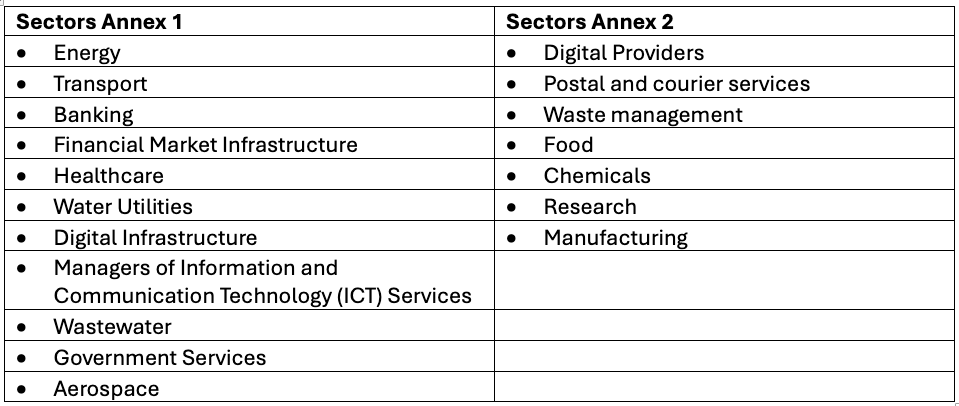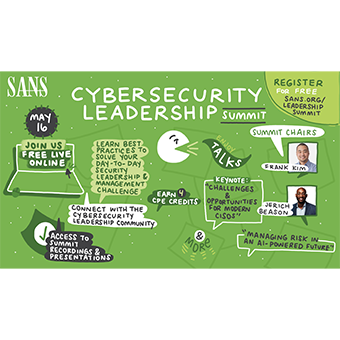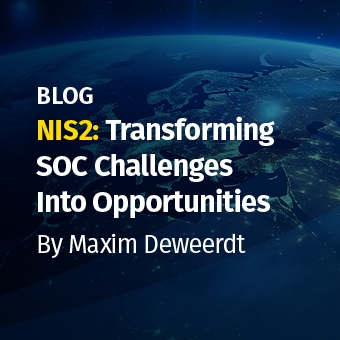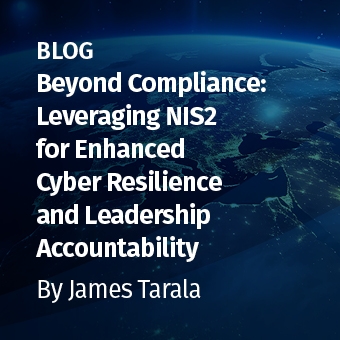Tags:
This is Part 3 of a multi-blog series on the new NIS2 Directive. Explore the complete series:
The elaboration of the new Network and Information Security Directive (NIS2) is to be implemented in European Union (EU) member states’ national legislations in the coming year. The new directive imposes stricter security requirements on a larger group of companies and introduces more enforcement requirements and higher fines. We highlight the NIS2 Directive from different security angles in this series.
Bojan Zdrnja is Chief Technical Officer and Penetration Team Lead at INFIGO IS, a security company in Croatia. He is also a SANS Certified Instructor of the SEC542: Web App Penetration Testing and Ethical Hacking course (GWAPT certificate), of which he is also a coauthor. “This new directive is an update of the original NIS directive that originated in 2016. The goal of NIS2 is to increase the cybersecurity maturity level of companies deemed critical and essential to the operation of our society,” said Zdrnja.
Essential and Important Entities
The original NIS directive covered mainly infrastructure companies. The new directive increases the scope of organizations that must comply with the new rules. “This means that the number of public and private organizations covered is increasing,” said Zdrnja. He explains that NIS2 defines two categories: essential and important. “Essential entities are generally considered to have a much more disruptive impact on the economy and society when their services fail than failures in important entities. Essential entities are subject to a more intensive supervision regime in which both ex-ante and ex-post compliance are monitored. Important entities are subject to a lighter form of supervision, only ex-post. For example, if there are indications of non-compliance with the law or an incident has occurred.” Zdrnja warns that companies that at first glance needn’t comply with the new rules may indeed be subject to them. That is because the NIS2 Directive also looks at the supply chain. “So, if you are a supplier to a critical company, you also have to obey the new rules, obviously, as otherwise, you risk losing that client,” said the SANS Instructor. “The last couple of years, supply chain companies quite often had something to do with important attack vectors, so it makes sense to include them in the new directive.”
Strict Requirements for Reporting
The NIS2 Directive entered into force in January 2023 and mandates EU member states transfer it into their national legislations by October 2024. “This could mean that differences in legislation between countries appear, however, I think most local laws will be generally the same, and any differences will be very subtle as member states want to be aligned with other countries.” Not least because the directive places strict requirements on incident reporting. “The EU wants that streamlined and the same for all the member states,” said Zdrnja. Depending on the category, a member state’s local authority will be responsible for reviewing compliance with the NIS2 Directive. Incidents must also be reported to this body. “The directive sets stringent rules about how incidents need to be reported,” Zdrnja continued. A big plus in this regard is knowledge sharing across European countries. “If an incident occurs in a company that falls under the new directive, they must report it to the authority in their specific EU member state. Those authorities can then share certain details about the current threats, and this will increase cooperation between member states.”
Increasing Cybersecurity Posture
According to Zdrnja, whether the NIS2 Directive will have a significant impact depends mainly on an organization’s current maturity level. “In the directive itself, there are not a lot of technical details as such. It just generally defines that companies need to do a cybersecurity risk assessment and that they have to increase their cybersecurity posture. I expect that for companies that have already invested something into increasing their cybersecurity level, it’ll be less work and cost to comply with the new rules. However, those in the beginning phases – and unfortunately we still see a lot of such companies – will have their work cut out for them to reach the same level of maturity and compliance.” This is why he urges organizations that are essential and important to the digital society to start going through their risk assessments, training plans, and other things they need to have in place once the national legislation comes into effect. “Most countries work with a transition period to give companies time and opportunity to adjust and comply. The sooner an organization starts, the more they can spread costs and manage the requirements of NIS2.”
Educating and Training Staff
A key element in the directive is training and education. “This is actually specifically mentioned in the NIS2 Directive,” said Zdrnja. “Companies need to invest in awareness of their staff across all levels. And it’s not just about the people on the shop floor, but also the management layers and the board, not in the least, because the NIS2 also clearly lays out responsibility. No matter your management-level position, you can’t run away from this anymore. It becomes your responsibility now, and that is something that board members can no longer ignore.”
As for offensive ops teams, Zdrnja thinks the NIS2 Directive will provide them with more work. “The directive doesn’t specifically mention offensive ops because that’s part of cybersecurity risk assessment. So, even though it’s not specifically listed, companies must do it as they implement the directive requirements. Hence, I expect that there will be increased demand for offensive ops teams.” Those teams will probably need to step up their game as well, as both attacks and defenses get more advanced, so education is also crucial here. “As companies start implementing the directive requirements, we all expect their cybersecurity posture will improve, which means that it will be a bigger obstacle for attackers and legitimate offensive ops teams. They will need to invest in their education and training to ensure they can successfully perform all the duties they need to cover the directive. And this is really the purpose of NIS2.”
Start Preparing Early
The most crucial thing offensive ops teams can do is to start preparing in advance as early as possible, said Zdrnja. “Companies need a robust cybersecurity program, both for defense and offensive. And it needs to be aligned with best practices. They must start doing risk assessments, implementing security controls, and training appropriate personnel. The sooner organizations start, the easier it will be to get to the right maturity level once everything is mandatory. As complying with the new directive isn’t something that can be done overnight.” He observes many companies having great interest in the new directive, not in the least because most weren’t under the previous NIS directive but will need to comply with the new one. “I see they are quite interested in what requirements they must comply with. Moreover, as NIS2 is still a bit blurry regarding how it will be translated into national legislation, it is not very specific. That creates a bit of turmoil because companies want to prepare but are not yet sure what to do.” Despite ambiguities, Zdrnja advises organizations to start preparing in time so that they have done as much as possible when it comes.
Which Organizations are Essential or Important?

Essential Entities: Large organizations operating in a sector from Annex 1 of the NIS2 Directive.
Key Entities: Medium-sized organizations operating in an Annex 1 sector and medium and large organizations operating in an Annex 2 sector.
An organization is considered large based on the following criteria:
- A minimum of 250 employees, or
- An annual turnover of €50 million or more and a balance sheet total of €43 million or more.
An organization is considered medium-sized based on the following criteria:
- 50 or more employees, or
- An annual turnover and balance sheet total of €10 million or more.
In this series on NIS2, we highlight the new directive from different angles so that CISOs and their organizations can gain insight into how to deal with NIS2.
Navigating NIS2 compliance doesn't have to be a daunting task. With SANS's comprehensive suite of resources, including tailored courses and expert certifications, your path to compliance is clear. Discover how at www.sans.org/mlp/nis2.
As SANS maps out industry preparedness for the new EU Commission's NIS2 Directive, your insights are invaluable. Please take a moment to complete the NIS2 survey to contribute to our research. Your feedback will help us provide the guidance and resources needed for this and future directives.
Continue reading in Part 4 of our NIS2 Compliance series here.





